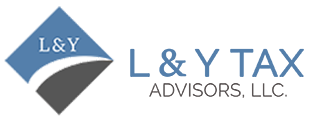
How to Plan an Audit?
As we know, an audit is crucial for a business to understand its financial records and properly manage them. For an audit to be effective, efficient, and successful, you need to thoroughly plan it first to understand the critical areas of risk, allocations of resources, and detailed procedures to be followed in an audit. This helps you tackle the areas that need most work and understand what you have to do. But how do you plan an audit? This article will guide you through every step in making a perfect and effective audit plan. Let’s begin!
Understanding Customer and Business Environment
1. Planning
Begin with a planning session with the client, seeking to understand more about the business operation and its industry specifics and any issues of concern to him or her. This will shape an audit plan that will more easily meet the client’s peculiar needs.
2. Information Gathering
Collect financial statements, organizational charts, prior audit reports, and other required documentation. This would provide a background for understanding the client’s financial health and structure of operations.
3. Understanding Internal Controls
Evaluate the internal control system implemented by the client to pin down possible areas of material misstatement risks. Such understanding is crucial to a base that is necessary to design effective procedures for any audit.
Risk Assessment
1. Identify Risks:
we need to identify the areas most vulnerable to errors or intentional manipulation to ensure financial statements are accurate and trustworthy, This means examining both external factors, like market fluctuations and regulatory updates, and internal factors, such as past financial discrepancies.
2. Prioritize Risks:
All risks are not created equal. Prioritize risk based on likelihood and potential impact. That prioritization helps focus audit efforts on high-risk areas.
Defining Objectives and Scope
1. Define Objectives:
The objectives of the audit have to be well-defined. They may include checking that the financial statements are true and fair, comply with certain regulations, or ensure the effectiveness of internal controls.
2. Determine Scope:
This ensures clarity and avoids scope creep. By determining scope, we clearly define the boundary of the audit process and what financial statements, accounts, and disclosures are to be subject to the audit.
Designing the Audit Plan
1. Audit Procedures:
Elucidate the elaborate procedures for conducting the audit, such as methods for checking controls, substantive procedures, and analytical reviews, amongst others, in gathering evidence.
2. Timeline:
An outlined schedule to follow through the audit that incorporates the essential milestones and deadlines. It establishes time management and ensures a good audit flow.
3. Resource Allocation:
Allocate work to the audit team that suits their skills and experience. Support the team with resources, including the latest technology and access to client records.
Communication and Coordination
1. Regular Meetings:
Schedule regular meetings between the audit team and the client to review findings, progress, and any issues that may come up. Effective communication would also mean immediate problem resolution so as not to derail the auditing process.
2. Documentation:
The audit work and results should be documented clearly and in detail, together with a record of communications. Documentation is necessary to support the conclusions and provide a record for future reference. If you have any tax or audit-related confusion, feel free to visit L&Y Tax Advisor.
Review and Adjustment
1. Continuous review:
Review the audit plan at regular intervals and make necessary modifications to it due to new circumstances or changes in the client’s business. Flexibility is imperative to be responsive to unforeseen challenges.
2. Final Review:
Review everything at the end before concluding to ascertain that all objectives and high-risk areas are addressed to the auditor’s satisfaction.
Summary
Here is everything you need to know about how to plan an audit. Effective planning in auditing forms the foundation of success for an audit process. Thus, a detailed and effective method of audit, which comprises proper planning regarding an adequate understanding of the client business; the objective of its operations; ways and means of risks in this regard; identifying the possible risk factors; and clear communication with a client, paves the base for planning to be one of the most value-adding exercises not only in discovering the potential issues on time but also for the smooth execution of audit work.
Read More:
List Three Things You Should Look for When Hiring a Tax Professional


